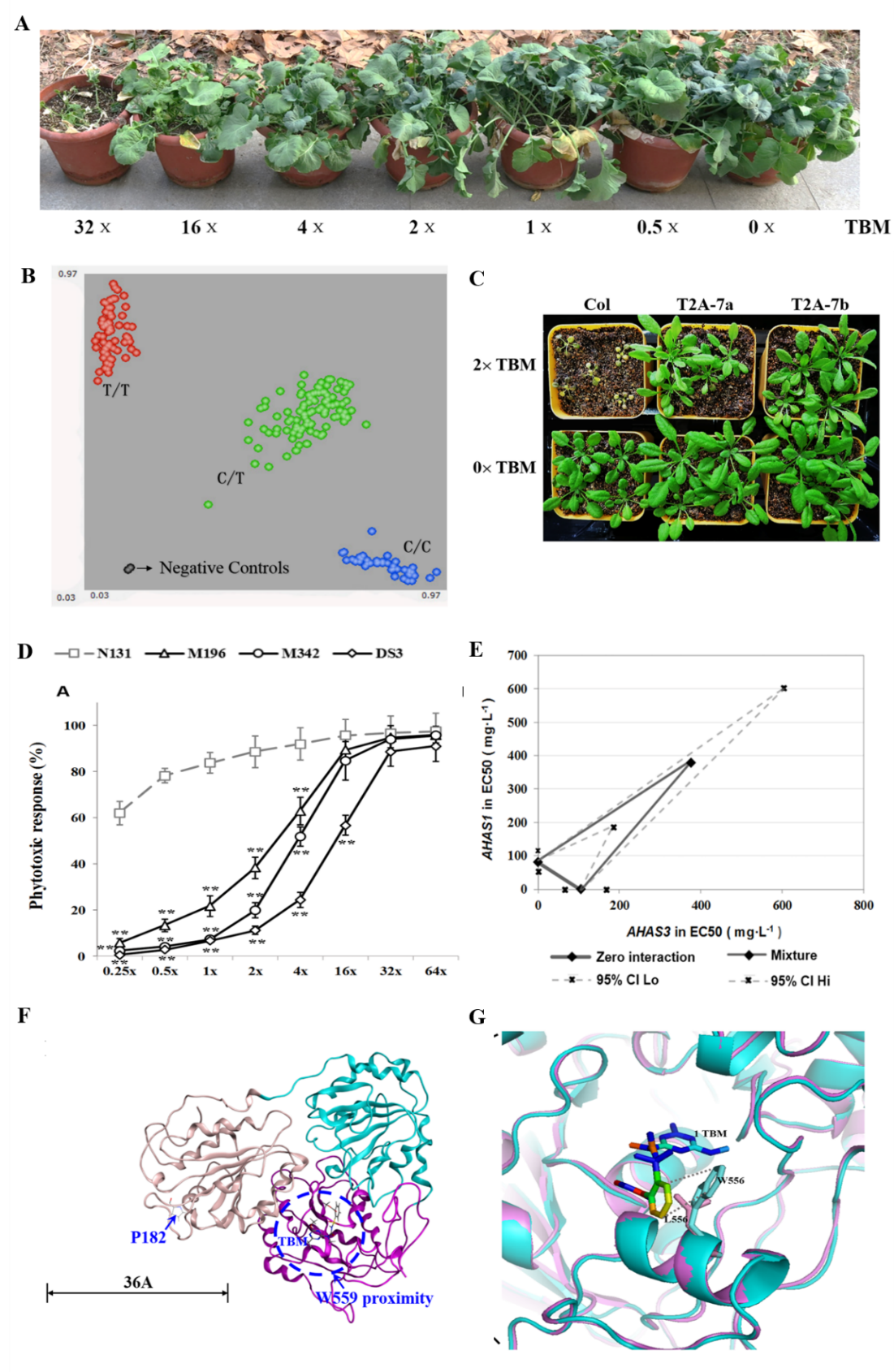Rapeseed is the largest oil crop in China and its stable production plays an important role in the national grain and oil security strategy. At present, the production mode of rapeseed in China is changing from traditional labor-intensive to large-scale and mechanized production. Chemical weed control has become an important process in the simplified cultivation of rapeseed. At the same time, with the rapid economic development in China, the cost of rural labor has greatly increased, and the extensive production management associated with the low comparative benefit of rapeseed has led to the increasingly serious grass damage. Thus, the problem of weed control has become one of the important factors restricting the production of rapeseed. Chemical weed control is the economic and effective method for preventing farmland grass, but the chemical weeding area is very limited in China due to shortages in herbicide-resistant rapeseed. Consequently, developing new rapeseed germplasm resistant to special herbicide, breeding resistance rapeseed cultivars and achieving chemical weed control are very urgent to promote development of rapeseed production in China.
Recently, the canola research team of Jiangsu Academy of Agricultural Sciences in China, published an online research article entitled “Development and molecular analysis of a novel acetohydroxyacid synthase rapeseed mutant with high resistance to sulfonylurea herbicides” in the Crop Journal. The team previously developed M342, which shows sulfonylurea herbicide resistance, by targeting acetohydroxyacid synthase (AHAS). Then, they used a progeny line derived from M342 for an additional round of ethyl methane sulfonate mutagenesis, yielding the novel mutant DS3, which harbored two mutations in AHAS genes and showed high sulfonylurea resistance of 16 times the recommended herbicide concentration (16× RC) (Fig. 1 A, D). According to Arabidopsis protein sequencing, one mutation was the substitution Trp574Leu, as in M342 and the other site was a newly recognized substitution, Pro197Leu. The mutant M196 with the substitution Pro197Leu located in AHAS1 was isolated, and the resistance gene was transformed into Arabidopsis for functional validation, which showed the resistance to sulfonylurea herbicide was 2× RC (Fig. 1 C). A KASP marker targeting Pro197Leu was subsequently developed and reliably identified the genotype, which resistance to sulfonylurea herbicides in the F2 population (Fig. 1 B). Strong synergistic effect was exhibited between the two mutant genes leading to the high resistance phenotype to herbicide in DS3 (Fig. 1 A, E). Analysis of the protein structures of AHAS1 and AHAS3 in wild-type and single-gene mutant plants revealed three-dimensional protein conformational changes that could account for differences in herbicide resistance characteristics including toxicity tolerance, AHAS enzyme activity, and AHAS gene expression (Fig. 1 F-G).
The team has obtained a batch of new resistant germplasms, such as M342, DS3 and 5N, with the successfully relative patents transformation about resistance genes, and earnings eight million yuan. The resistance germplasms have been introduced and applied by more than 30 national rapeseed scientific research advantage units. Moreover, the team take the lead in developing new non-transgenic herbicide-resistant rapeseed cultivar, Ning R101 (registration no. GPD Rapeseed 2018320256) in China, by using these new herbicide-resistant germplasm lines, which has been launched into production for demonstration, promotion and application. The utilization of the above mentioned resistance gene resources could effectively solved the problem of making containment on weed control in China, which contributes to promoting high-quality development of rapeseed production.

Fig.1 Resistance and genetic analysis of new rapeseed germplasm DS3 with high resistance to sulfonylurea herbicide.
Authorship and Funding
The first author of the study is Yue Guo, the associated professor in Institute of Industrial Crops in Jiangsu Academy of Agricultural Sciences. And the corresponding authors are Maolong Hu and Huiming Pu, professors in Institute of Industrial Crops in Jiangsu Academy of Agricultural Sciences. This work was supported by the National Natural Science Foundation of China (31870519, 31901503 and 31671731), the National Key Research and Development Program of China (2016YFD0101300 and 2016YFD0100202-10), the China Agriculture Research System (CARS-12), and the Natural Science Foundation of Jiangsu Province (BK20190267).
The article online website: https://www.sciencedirect.com/science/article/pii/S2214514121001112


